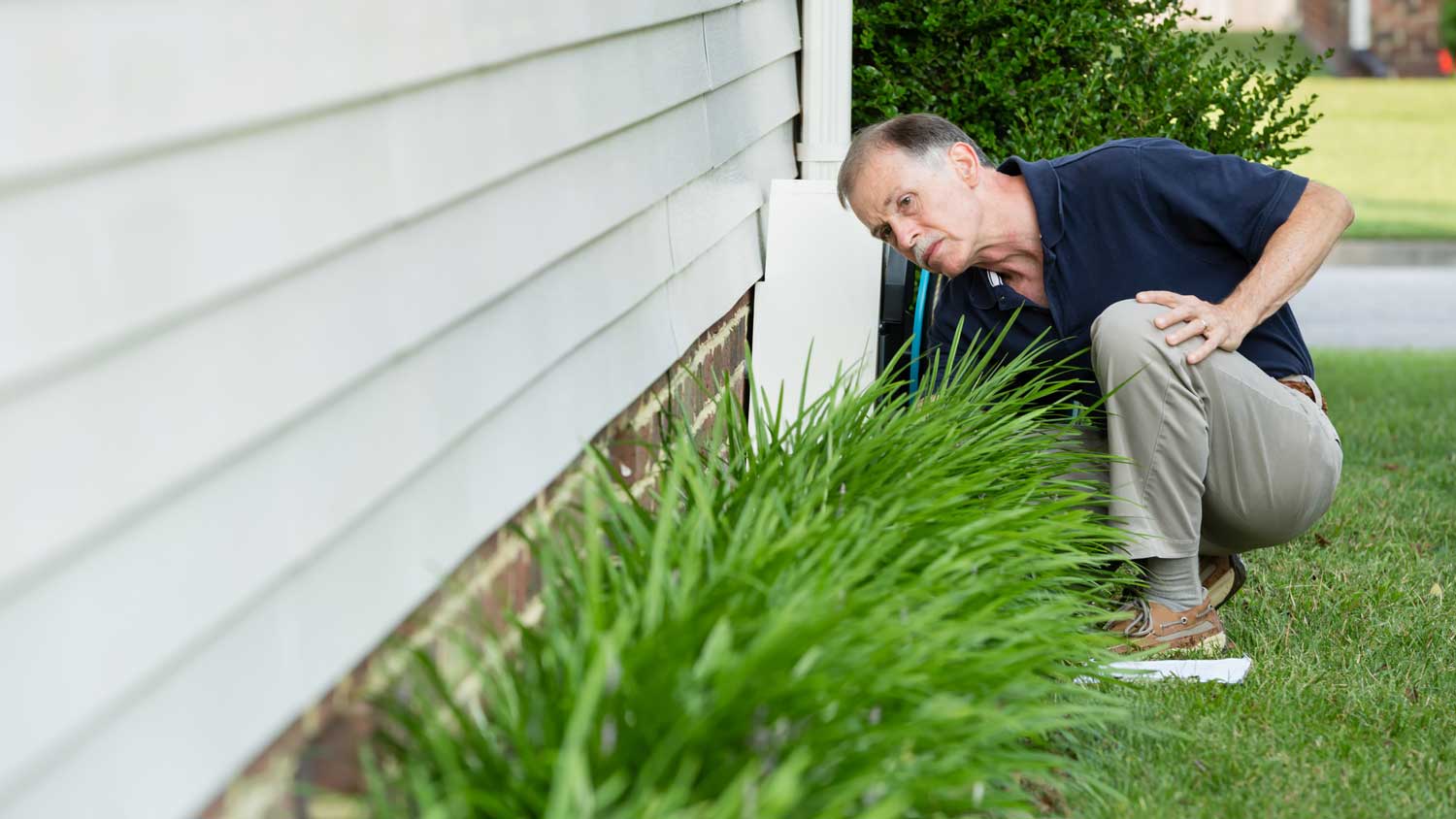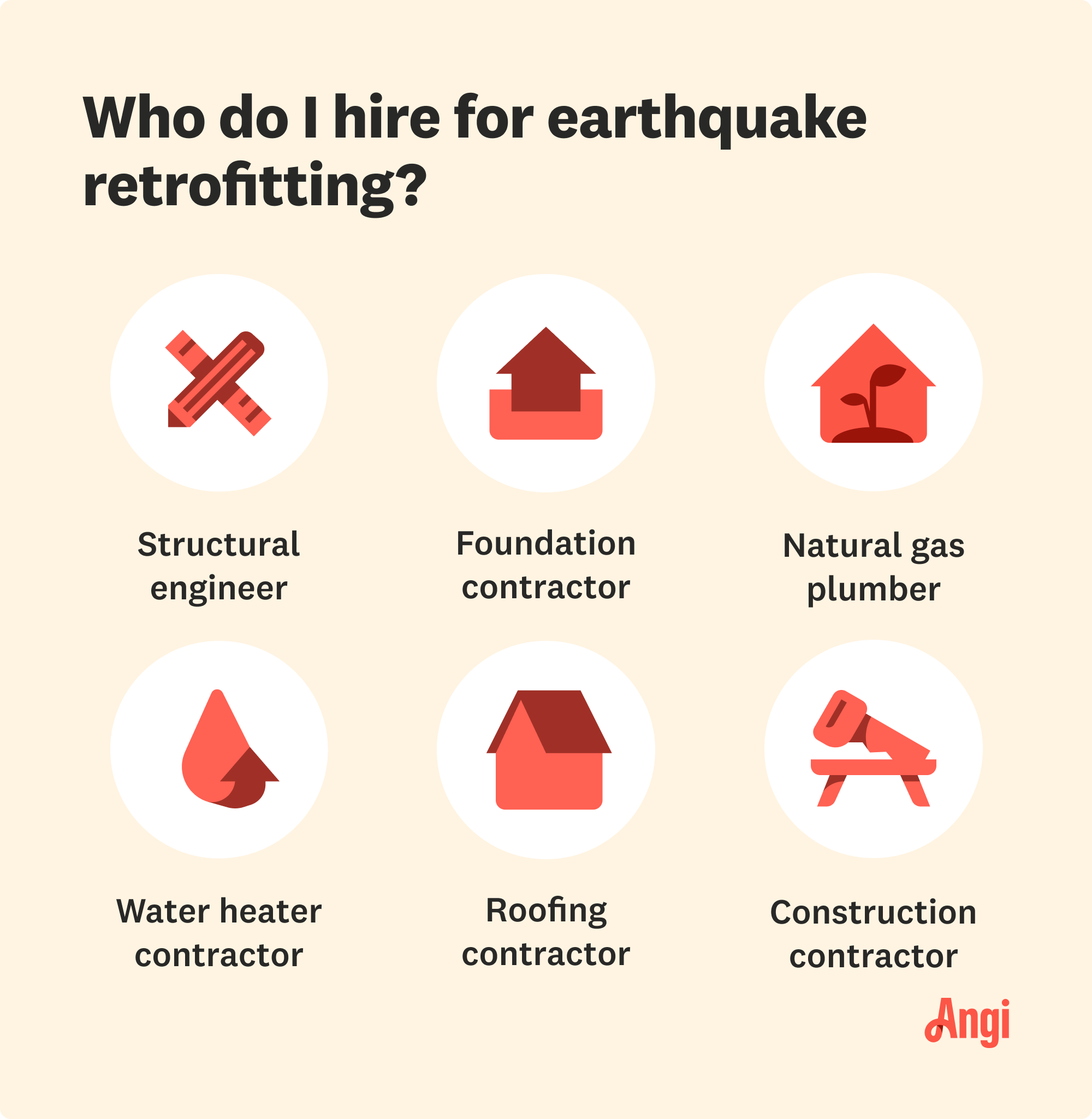
Discover how much it costs to repair earthquake damage. Learn about average costs, key factors, and ways to save on earthquake repairs for your home.
Don’t let your earthquake knowledge be shaky—get up to speed on retrofit requirements


An earthquake retrofit protects a home from extensive damage during an earthquake.
Homes near fault lines and raised-foundation homes may need a retrofit.
Retrofitting can protect your family in an earthquake event.
A seismic retrofit costs about $3,500 to $8,700.
Retrofitting may involve bracing the foundation or reinforcing walls.
Earthquakes come with little to no warning, but they can be extremely destructive. When an earthquake rolls into town, there’s a risk it could bring your house down with it. While many modern homes are built or reinforced to withstand the shaking of an earthquake, older homes built before 1980 could need an earthquake retrofit to make them safer.
If you’re considering a seismic retrofit, here’s everything you need to know about the process, from determining whether or not you need one to how much it will cost.
An earthquake retrofit is the process of doing construction on a building to strengthen the foundation and frame. This process can help protect the home from massive and costly structural damage, such as the house sliding off its foundation or the walls collapsing from an earthquake's violent shaking.
Not every home will need earthquake retrofitting. For example, the U.S. Geological Survey (USGS) notes that Florida and North Dakota have the fewest earthquakes, and homes in these areas likely don’t need earthquake retrofits (instead, they may need to prepare for hurricanes or heavy snowfall). There are two key components to consider when deciding if you need an earthquake retrofit:
Your home’s location plays a big part in whether or not you need an earthquake retrofit. In Alaska and California, earthquake retrofitting and preparations are the norm, as these areas are prone to earthquakes.
Earthquakes that are not human-induced, such as those from material extraction or mining, happen along fault lines where tectonic plates meet. These tectonic plates move slowly over time, and the friction between them can trigger an earthquake. The USGS offers a fault line map that determines areas with the lowest to highest earthquake hazards, and this can help you determine if you live in an area with a moderate to high risk of a destructive earthquake.
For people living in earthquake-prone areas, some homes are more vulnerable to damage than others, but a seismic retrofit can help mitigate risk. Some common home types that are more likely to require earthquake retrofitting include:
Raised foundation: This is a home that has open space, or a crawl space, beneath the first floor. Homes on raised foundations could slide off the foundation without a retrofit.
Hillside: Homes on hillsides may have stepped walls, placing more burden of support on the foundation. An earthquake could cause a hillside home to collapse.
Stem-wall: A type of raised foundation home, a stem-wall home has a wood frame on a concrete foundation. It is at risk of the wood frame sliding off of the foundation.
Crawl space wall: This has a short wood frame between the concrete-raised foundation and the wood-framed first floor. Homes with crawl space walls are at risk of sliding off the foundation.
Post and pier: Rather than having a foundation spanning the home’s full perimeter, post and pier homes sit on wood or concrete posts that may collapse or shift in an earthquake.
Soft-story: Homes with rooms or living spaces above the garage are vulnerable to earthquake damage, as garage walls are often not designed to withstand movement.
The length of an earthquake retrofitting project varies due to factors such as home size, home type, and location. However, an earthquake retrofit for a 2,000-square-foot home takes a few days to a week. Most raised foundation homes stay within that time frame unless they’re large or soft-story homes.
Hillside homes take longer, with a 2,000-square-foot home taking two weeks or more, depending on the slope and stability of the structure. The foundations of these homes step down the hillside, so strengthening the structure may require stabilizing each step, bolting the frame to the foundation, and bracing the wall structure.
An earthquake retrofit costs about $3,500 to $8,700, or about $3 to $7 per square foot for materials and labor. While you can pack a “go bag” of clothes and food if you need to evacuate or stash some supplies if the power goes out during an earthquake, retrofitting is one element of earthquake preparedness you should leave to the pros. Making structural changes to a home requires extensive training and skills to ensure it’s truly safe during an earthquake.
Earthquake retrofitting is worth it for people living in areas prone to earthquakes. Earthquakes happen suddenly, and an earthquake that happens close by, at a high magnitude, or both can be destructive. A home with reinforced walls, bolted foundations, and gas shut-off valves will be more resilient to shaking and outages compared to an older home that doesn’t have these added features.
Here are the pros of earthquake retrofitting:
If a building shifts off of its foundation or collapses, it puts you and your family at risk of serious injury or even death. The retrofit is designed to help the building withstand shaking and reduce damage. A seismic retrofit is crucial for keeping people safe in homes located in earthquake-prone areas.
Similarly, if the home slides off the foundation or the walls or foundation collapse, you’ll need to relocate for weeks or months during repairs. Extensive damage may even require you to spend years rebuilding your home. But retrofitted homes are more likely to remain standing after an earthquake, so you won’t have to find somewhere else to live during the repair or completely rebuild.
The average cost to repair damage after an earthquake is $5,000 to $25,000. Comparatively, seismic retrofitting costs about $3,500 to $8,700. While homeowners with earthquake insurance may have some help with repairs after a natural disaster, some policies could require you to have an earthquake retrofit to qualify for assistance.

Depending on your home type, you may require different types of retrofitting. When you decide to start earthquake retrofitting, consult with licensed, insured contractors to get this work done. These aren’t tasks you can DIY because incorrectly retrofitting your home could put your family in danger during an earthquake. The pros will know which type of reinforcements your home needs.
A foundation contractor will drill holes through the foundation’s sill plates and install anchor bolts, or they may install steel plates to secure the sill plates to the foundation. This helps secure the home to its foundation, keeping it from sliding off during intense shaking. It’s essential for any type of home with a raised foundation.
Homes with crawl space walls require extra bracing to keep the house from sliding off of the foundation. Crawl space walls can also shift or collapse. To brace crawl space walls, a contractor will install additional support elements, including plywood sheathing, wood blocking, framing clips, and anchor bolts to keep the crawl space walls steady during shaking.
Brick and stone chimneys can become dangerous during an earthquake. These materials can break during the earthquake, causing the brick or stone pieces to fall through the roof. This can cause serious injuries to people inside the home or passersby outside. Several options are available to make chimneys safer during an earthquake.
Fill the chimney: If you aren't planning to use the chimney, you can choose to fill it with concrete or a large steel tube.
Add diagonal braces: A pro will install diagonal braces inside the chimney to hold it in place during shaking.
Replace the chimney: Some cities may require chimney removal or replacement with other materials, like metal.
Like reinforcing a brick or stone chimney, you’ll need to reinforce any walls made of masonry. A structural engineer can consult you on the best options for reinforcing your walls, including reinforced concrete jackets, anchor bolts, steel plates, and floor, ceiling, and foundation diaphragms.
Soft-story homes are especially vulnerable to movement from an earthquake, so you’ll need to work with a structural engineer to protect this upper story from impact. The professionals may install plywood sheathing or steel framing around the garage door for better reinforcement.
Don’t skip installing an earthquake shut-off valve. An automatic gas shut-off valve will turn off the gas supply during strong shaking from an earthquake. Unlike gas shut-off valves for appliances, the automatic gas shut-off valve applies to the whole house and doesn’t require you to shut it off manually.
If there isn’t a valve, the shaking could break your gas pipes, causing gas to leak into the home. Leaking gas is toxic to breathe in and could cause a fire or explosion. Cities in earthquake-prone areas may even require an earthquake gas shut-off valve, so make sure you have a natural gas plumber help you install one for your home.
Hire a water heater professional to install metal strapping around your water heater tank. The straps hold the water heater in place during vibrations, which can help keep the tank from breaking off from the water and gas lines. Without these straps, you could experience flooding and dangerous gas leaks after an earthquake.

There are many potential professionals to call when deciding who to hire for earthquake retrofitting. However, hiring a structural engineer in your area is the best option for retrofitting your home. The engineer can help determine how to reinforce your home to protect it against shaking.
Before hiring, ensure the local foundation repair pro you choose is trained specifically for earthquake retrofitting. If you plan to install a gas shut-off valve, you’ll want to hire a natural gas plumber near you to ensure this is done correctly and safely, and you might need to hire additional home specialists to earthquake-proof different parts of your home.
From average costs to expert advice, get all the answers you need to get your job done.

Discover how much it costs to repair earthquake damage. Learn about average costs, key factors, and ways to save on earthquake repairs for your home.

A seismic shut-off valve stops the flow of gas during an earthquake, protecting your home from fires and explosions. Here’s what your earthquake valve installation cost will look like.

Earthquake retrofit costs vary based on home size, location, and project scope. Learn what impacts your price and how to budget for a safer, more secure home.

Earthquake gas shut-off valve installation is important for any home in earthquake-prone areas. Explore how they’re installed here.

In a seismic event, an earthquake gas shut-off valve could stop gas leaks and save your life. Learn more about its costs, installation, and benefits.

If you live in an older home in an area prone to seismic activity, you likely need to hire a seismic retrofitting company to protect your home from earthquakes.